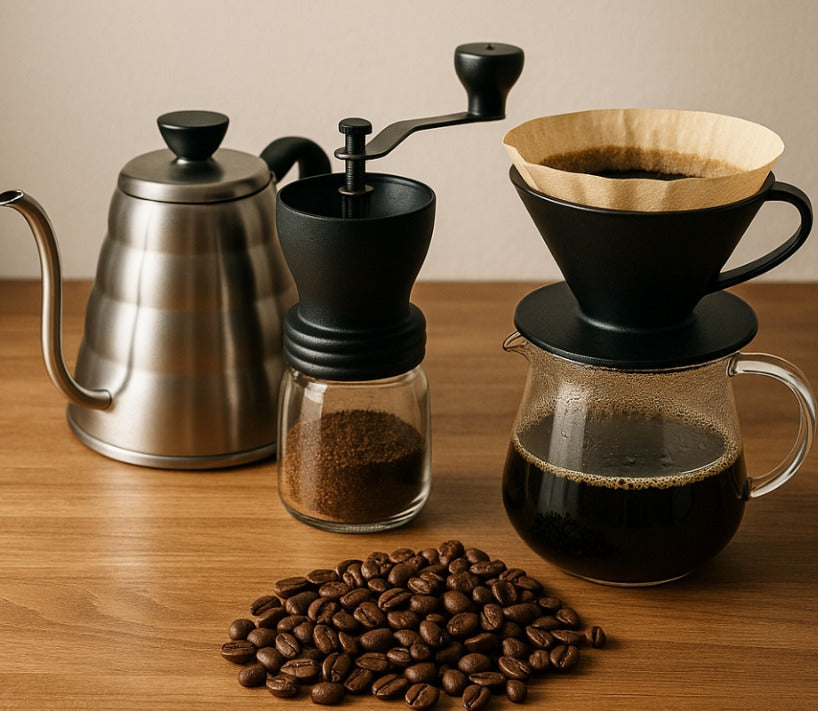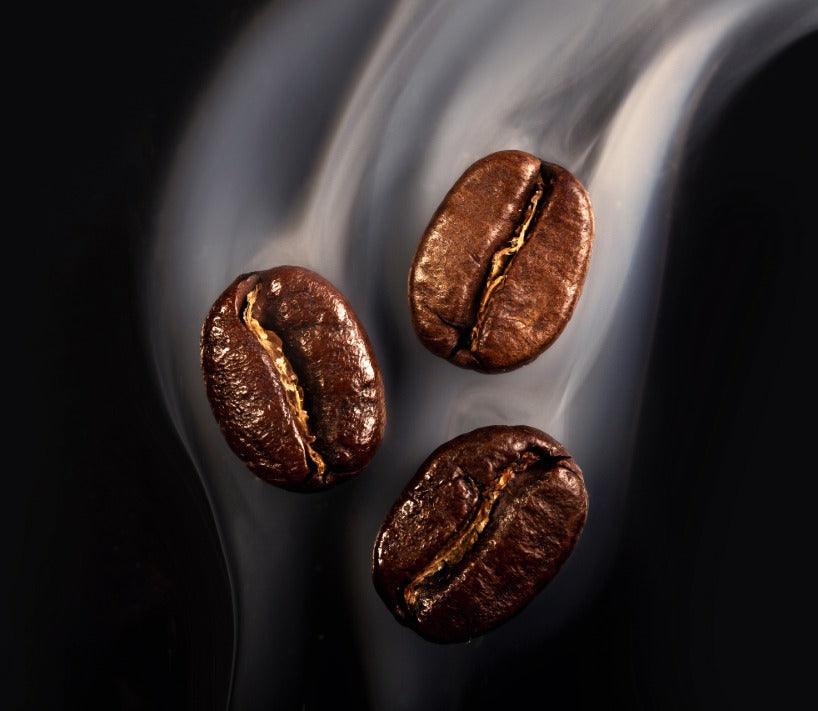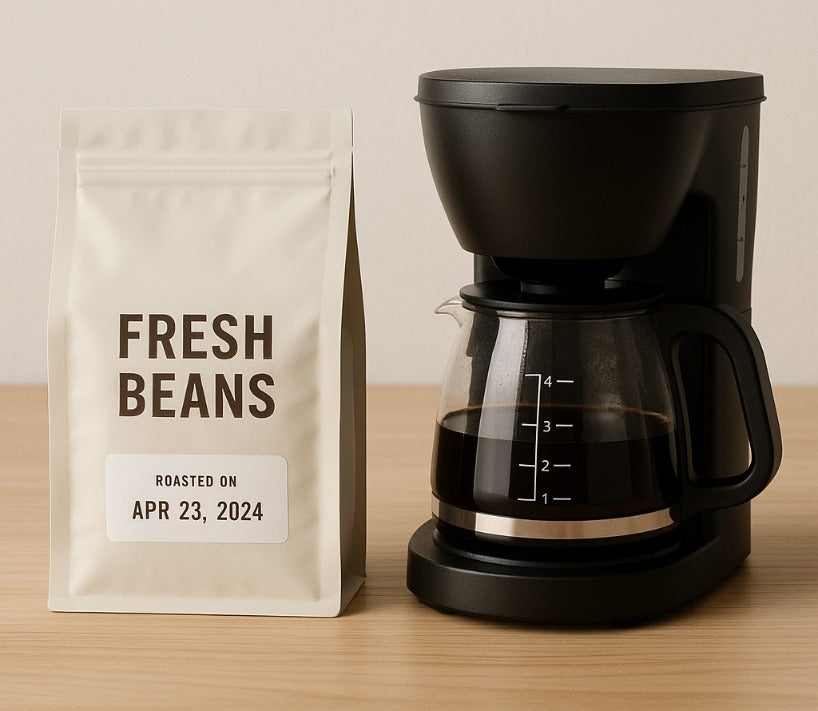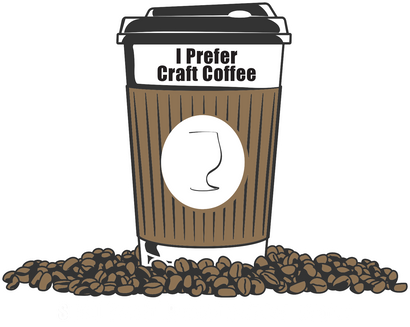Score One for Your Taste Buds: Why 85-Plus Specialty Coffee Leaves “Pretty Good” Beans in the Dust
May 20, 2025 4 min read
Score One for Your Taste Buds: Why 85-Plus Specialty Coffee Leaves “Pretty Good” Beans in the Dust
Ever take a sip of “specialty” coffee that promised fireworks, only to get a polite golf clap from your taste buds? Been there, grimaced that. Here’s the plot twist nobody puts on the bag: there’s specialty coffee, and then there’s high-scoring specialty coffee—beans that ace 85 points or higher on the Specialty Coffee Association (SCA) score sheet. Today I’m blowing the lid off why those extra points matter so much, whether you’re hunting for the best coffee to buy online, the best espresso beans for your new gadget, or just want good coffee to drink black without sugar therapy.
1. Coffee Report Card 101: What Does “85+” Even Mean?
Let’s nerd out for sixty seconds. The SCA grades coffees out of 100 on aroma, flavor, acidity, body, balance, sweetness, uniformity, and aftertaste. Anything 80–84.99 earns the “specialty” sticker. Score 85+ and you enter the Dean’s List—think fewer defects, more vibrant flavors, and a finish so clean you’ll question every stale office pot you’ve ever endured.
2. Flavor Fireworks vs. Flavor Participation Trophy
Generic specialty coffee (for our purposes, 80-ish) is nice—like a competent cover band. 85+ is the headline act. Expect fruit notes that actually taste like fruit, chocolate that whispers “cocoa nibs” instead of “burnt brownie edges,” and acidity that zings instead of stings. If you’re chasing the best tasting whole bean coffee or the best small batch coffee for weekend brunch, that flavor separation matters.
3. Farming on Expert Mode
High-scoring coffee usually comes from meticulously managed micro-lots. Farmers test soil, tweak shade canopy, and pick cherries at jaw-dropping ripeness. It’s agricultural haute couture—hand-sewn instead of factory-stitched. That extra attention translates to beans worthy of the best craft coffee at home badge.
4. Processing Perfected—Because Funk Belongs in Music, Not Defects
Whether it’s washed, honey, or natural, processing methods for 85-plus coffees get obsessive. Picture cherries laid on raised beds and turned like sun-bathing VIPs. Fewer defects mean smoother cups, ideal if you want top coffee delivered that won’t bite back.
5. Roasting: Precision Over Pyrotechnics
Roasters treat these lots like high-stakes soufflés: constant temperature probes, sample cupping, zero guesswork. Light–medium profiles showcase terroir; darker roasts risk muting that hard-earned complexity. So when you buy specialty coffee online and see profiling notes longer than a novel—good sign.
6. Freshness or Bust
Because quantities are tiny, bags rotate fast. Many roasters ship same-day when possible (check the roast date!). That’s gold if you’re Googling “where can I buy fresh coffee beans near me” at 11 p.m. and realize e-commerce is your friend.
7. Espresso’s Sweet Spot
High scores aren’t just for filter geeks. Dense, defect-free beans handle espresso pressure like champs—producing a syrupy, sweet shot with zero ash. Perfect if you’re trial-running the best espresso beans for latte art bragging rights.
8. Better Black, Friendlier Milk
Lower-defect beans = fewer harsh phenolics. Translation: you can sip straight black without wincing, yet they still punch through milk with clarity. That’s clutch for best coffee for non coffee drinkers who usually drown cups in creamer.
9. Sustainable & Traceable (Because Guilt Is So 2020)
High-scoring lots often come from farms paid above-market premiums. Better wages → happier pickers → better quality → virtuous cycle. If you need a gift for coffee lover that’s ethically sound, point to that traceability QR code and bask in planet-friendly glow.
10. Shelf-Status vs. Warehouse Limbo
Commodity-grade beans can sit in storage longer than my New Year’s resolutions. Micro-lots move fast—they’re simply too tiny and too pricey to linger. So the best craft coffee online you ordered last week? Likely roasted days ago, not months.
11. Brewing Forgiveness Factor
Higher-quality beans are less finicky about brew variables. Over-extract by a hair? You’ll still get sweetness. Under-extract? You’ll taste bright fruit, not battery acid. Beginner baristas rejoice.
12. Cup-Score Inflation Myth-Bust
“But isn’t an 82 to 85 gap tiny?” On paper, yes. On the palate, it’s the difference between elevator Muzak and a live jazz quartet. Those extra points compound across aroma, flavor clarity, and aftertaste length. You feel it.
13. Price Perspective
Sure, 85-plus beans cost more per pound. Yet one café latte runs $5-7. Brew at home and you’re paying cents per blissful sip—solid math for daily drinkers scouting the best coffee online without an endless café tab.
14. Giftability & Bragging Rights
Need presents for coffee lovers? Hand them an 87-point Ecuador in boutique packaging. Watch eyes widen. Bonus: they’ll toast your sophisticated palate every morning.
15. Practical Buying Tips:
-
Read cupping notes: Seek specific descriptors—“ripe mango,” “red velvet cake”—over vague “bold & smooth.”
-
Check transparency pages: Farms, varietals, elevations. If a roaster hides info, swipe left.
-
Subscribe wisely: Seasonal micro-lot subscriptions keep your rotation fresh and SEO-friendly—hello best specialty coffee online searches!
-
Storage matters: Use airtight canisters, skip the fridge, finish within four weeks.
-
Dial-in cheat sheet: Start 1:16 brew ratio, 200 °F water, 20-24 % extraction target. Adjust to taste.
Congratulations—you now speak fluent cup score! By gravitating toward 85-plus specialty coffee, you’re treating yourself to elevated flavor, ethical sourcing, and fresher beans that make every morning feel like a tiny vacation. Next time someone brags about finding “pretty good” coffee, flash your new knowledge (and maybe your perfectly bloomed V60) and kindly explain the difference between passable and phenomenal.
Your palate, your brain, and arguably the planet all win. And while we’re absolutely not here to sell you coffee (promise), we are here to make sure you know how to choose the beans that truly deserve a place in your grinder. Here’s to higher scores, louder flavor symphonies, and never settling for “meh” again. Cheers!
Also in Best Coffee To Buy Online Education

Brewing The Best Coffee at Home: Stop Waiting in Line
November 03, 2025 4 min read
Learn Brewing The Best Coffee at Home with a quick Proof → Promise → Plan system: choose fresh, roast-dated beans, use a simple 1:16 recipe at 200°F, and lock a 4–6 minute routine that beats the drive-thru on taste, time, and cost.

Best Tasting Coffee At Home: Stop Buying “Deals,” Start Buying Value
November 02, 2025 4 min read
Want the Best Tasting Coffee At Home? Skip old ‘deal’ beans. Use fresh, high-scoring, air-roasted coffee and a simple 1:16 plan. This guide shows proof, a clear promise, and a step-by-step plan to order smart, brew better, and enjoy sweeter, cleaner cups—daily.

Best Coffee To Make At Home: Fresh Beans, Simple Plan
October 31, 2025 4 min read
Learn the Best Coffee To Make At Home with a tiny, repeatable system: pick fresh, high-scoring, roast-to-order beans; brew at a simple 1:16 ratio; fix cups with one change at a time. Includes a comparison table, freshness rules, and beginner-friendly FAQs.
